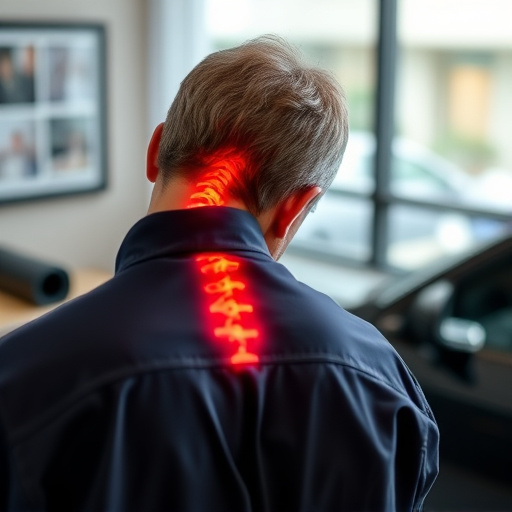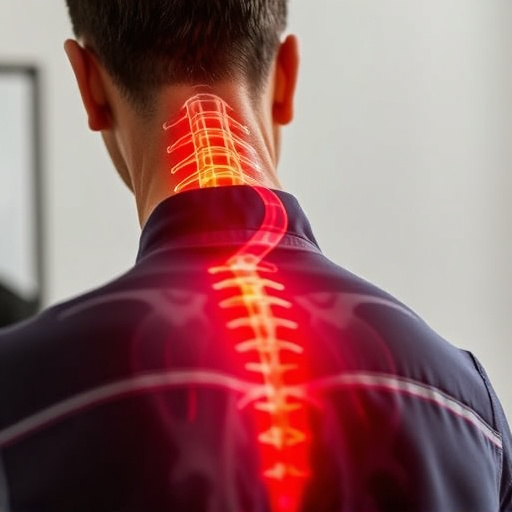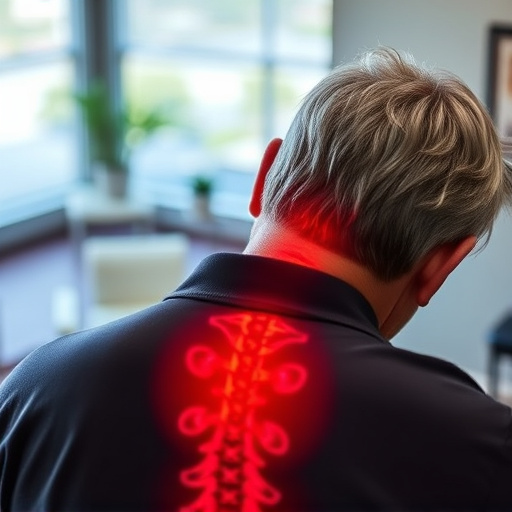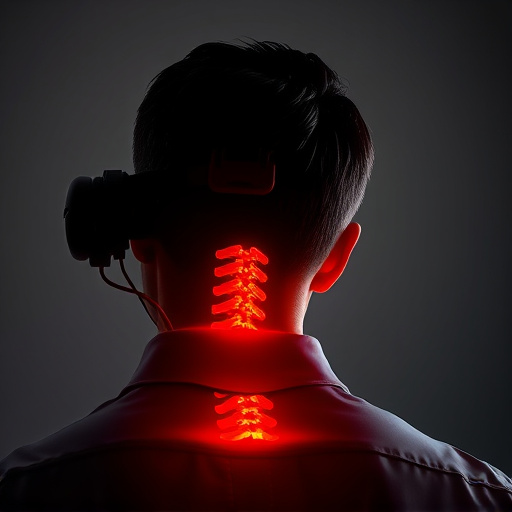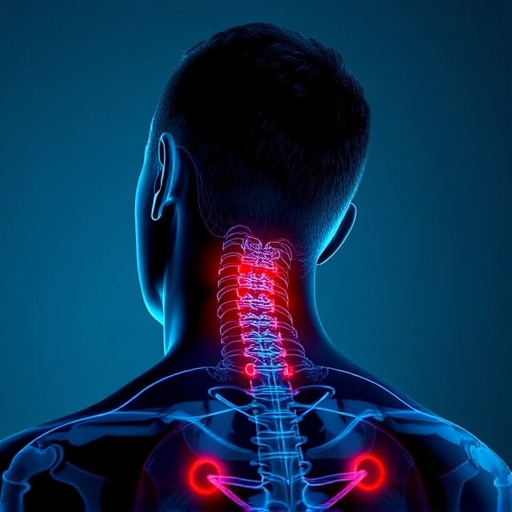Lower back pain, or lumbar region discomfort, is a common issue with numerous causes, including car accidents (whiplash) and conditions like herniated discs. A whiplash treatment specialist offers advanced non-invasive treatments to alleviate chronic or severe pain without surgery. These specialists diagnose root causes using holistic methods, combining manual therapy, exercises, and patient education. Techniques like chiropractic adjustments, physical therapy, and targeted exercises restore mobility, strengthen muscles, and promote healing for faster recovery. Preventing recurrence involves regular exercise, core strengthening, weight management, ergonomic adjustments, and low-impact activities to maintain spinal health.
Lumbar region discomfort and injuries, commonly affecting the lower back, can significantly impact daily life. This article delves into understanding specific causes, from whiplash injuries to structural issues. We explore a range of non-invasive treatments, highlighting the crucial role of a whiplash treatment specialist in effective care. Learn about physical therapy, targeted exercises, and preventative measures to manage and avoid recurrent lumbar pain.
- Understanding Lumbar Region Discomfort and Whiplash Injuries
- Common Causes of Lumbar Pain and Whiplash
- Non-Invasive Treatment Options for Lumbar Region Relief
- Role of a Whiplash Treatment Specialist in Effective Care
- Physical Therapy and Exercise for Whiplash and Lumbar Pain Management
- Preventative Measures to Avoid Recurrence
Understanding Lumbar Region Discomfort and Whiplash Injuries
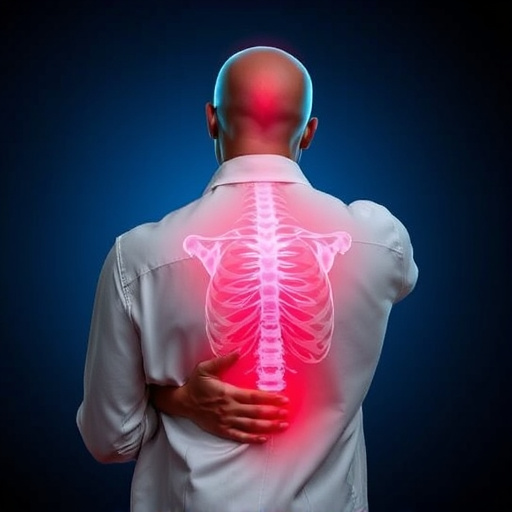
Lumbar region discomfort, often referred to as lower back pain, is a prevalent issue affecting individuals from all walks of life. It can arise from various causes, including muscle strains, herniated discs, arthritis, or poor posture. For those experiencing chronic or severe lumbar pain, it’s essential to seek the guidance of a whiplash treatment specialist. These experts are trained to diagnose and address the root cause of the problem, offering tailored solutions for effective relief.
Whiplash injuries, commonly associated with car accidents, can also significantly impact the lumbar region. The sudden force during a collision causes spinal muscles and ligaments to stretch beyond their limits, leading to pain, stiffness, and sometimes even long-term neurological issues. A whiplash treatment specialist plays a crucial role in managing these injuries, utilizing advanced techniques and therapies to alleviate symptoms, accelerate healing, and restore mobility.
Common Causes of Lumbar Pain and Whiplash

Lumbar region discomfort, often leading to injuries, can stem from a variety of causes. One common issue is whiplash, a condition typically associated with motor vehicle accidents but also arising from sudden, forceful movements like sports injuries or heavy lifting. Whiplash treatment specialist focus on addressing the resulting muscle sprains and strains in the lumbar spine, which can cause intense pain and limited mobility.
Other frequent contributors to lumbar pain include degenerative disc disease, where the discs between vertebrae weaken and break down over time; herniated discs, where the soft inner material protrudes through a tear in the outer layer; and spinal stenosis, a narrowing of the spinal canal that puts pressure on nerves passing through it. These conditions often require tailored interventions from a whiplash treatment specialist to alleviate pain and restore function.
Non-Invasive Treatment Options for Lumbar Region Relief
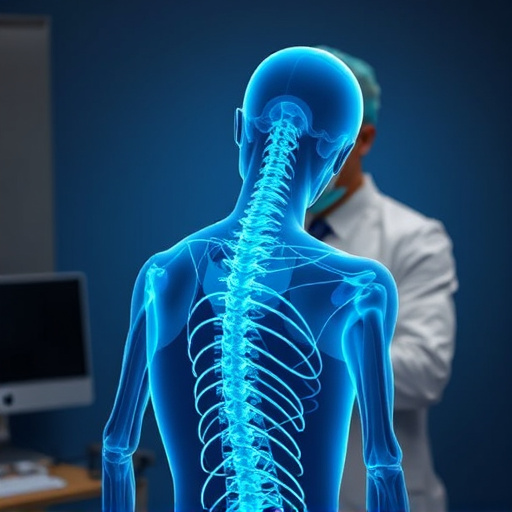
Many individuals suffering from lumbar region discomfort and injuries seek non-invasive treatment options as a preferred course of action, often guided by a whiplash treatment specialist. This approach is particularly appealing due to its minimal side effects and ability to promote healing without invasive procedures. Techniques such as chiropractic adjustments, physical therapy, and targeted exercises are commonly recommended. Chiropractic care, for instance, involves gentle manipulations to improve spinal mobility and reduce pain signals. Physical therapy focuses on strengthening the back and core muscles, enhancing flexibility, and teaching patients specific stretches and exercises to manage their condition effectively.
Additionally, advanced technologies like ultrasound and electric stimulation are employed to alleviate pain and promote tissue repair. These non-invasive treatments offer a holistic approach, addressing not just the symptoms but also the underlying causes of lumbar region discomfort. As such, they provide a safe and effective alternative for those seeking relief from injuries without resorting to more extreme measures.
Role of a Whiplash Treatment Specialist in Effective Care

The Whiplash Treatment Specialist plays a pivotal role in effectively managing and alleviating lumbar region discomfort and injuries stemming from whiplash-related incidents, such as car accidents. These specialists are equipped with advanced training and expertise to diagnose complex conditions and tailor personalized treatment plans. They often employ a multi-faceted approach that may include manual therapy, exercises, and patient education to restore mobility, reduce pain, and prevent future complications.
By leveraging their deep understanding of biomechanics and injury response mechanisms, whiplash treatment specialists can identify the root causes of lumbar discomfort. This targeted approach ensures that treatments are not merely symptomatic but rather address underlying structural issues, promoting faster recovery times and long-term relief. Their expertise is invaluable in navigating the often intricate path to healing, offering patients a comprehensive and holistic care experience.
Physical Therapy and Exercise for Whiplash and Lumbar Pain Management

Physical therapy is a cornerstone in managing lumbar region discomfort and injuries, especially those stemming from whiplash. A whiplash treatment specialist can design a personalized program incorporating exercises to enhance flexibility, strengthen core muscles, and improve posture. These strategies not only alleviate pain but also prevent future exacerbations by promoting better body mechanics.
Targeted exercises, such as stretching for tight hamstrings or strengthening exercises for the abdominals and back, are crucial components of physical therapy. A specialist will guide patients through these activities, ensuring proper form to avoid further injury. Regular sessions can lead to significant improvements in range of motion, reduced pain levels, and enhanced overall stability in the lumbar region.
Preventative Measures to Avoid Recurrence
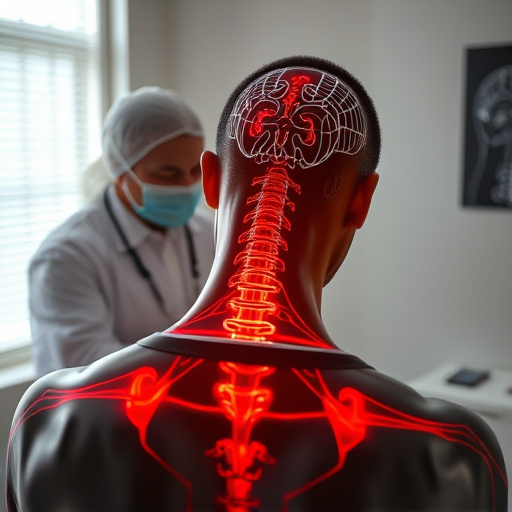
Preventing recurrence is key when managing lumbar region discomfort and injuries. After initial recovery, implementing certain measures can significantly reduce the risk of future issues. Regular exercises focusing on core strength and flexibility are essential; these exercises help stabilize the spine and improve overall posture. Maintaining a healthy weight is also crucial, as excess strain on the lower back can exacerbate existing conditions.
Additionally, seeking guidance from a whiplash treatment specialist can offer tailored advice. They may recommend ergonomic adjustments to daily routines, such as proper lifting techniques and comfortable workstation setups. Using supportive cushions or ergonomically designed furniture can further reduce the likelihood of lumbar strain. Moreover, staying active with low-impact activities like swimming or cycling promotes blood circulation and keeps the spine healthy.

